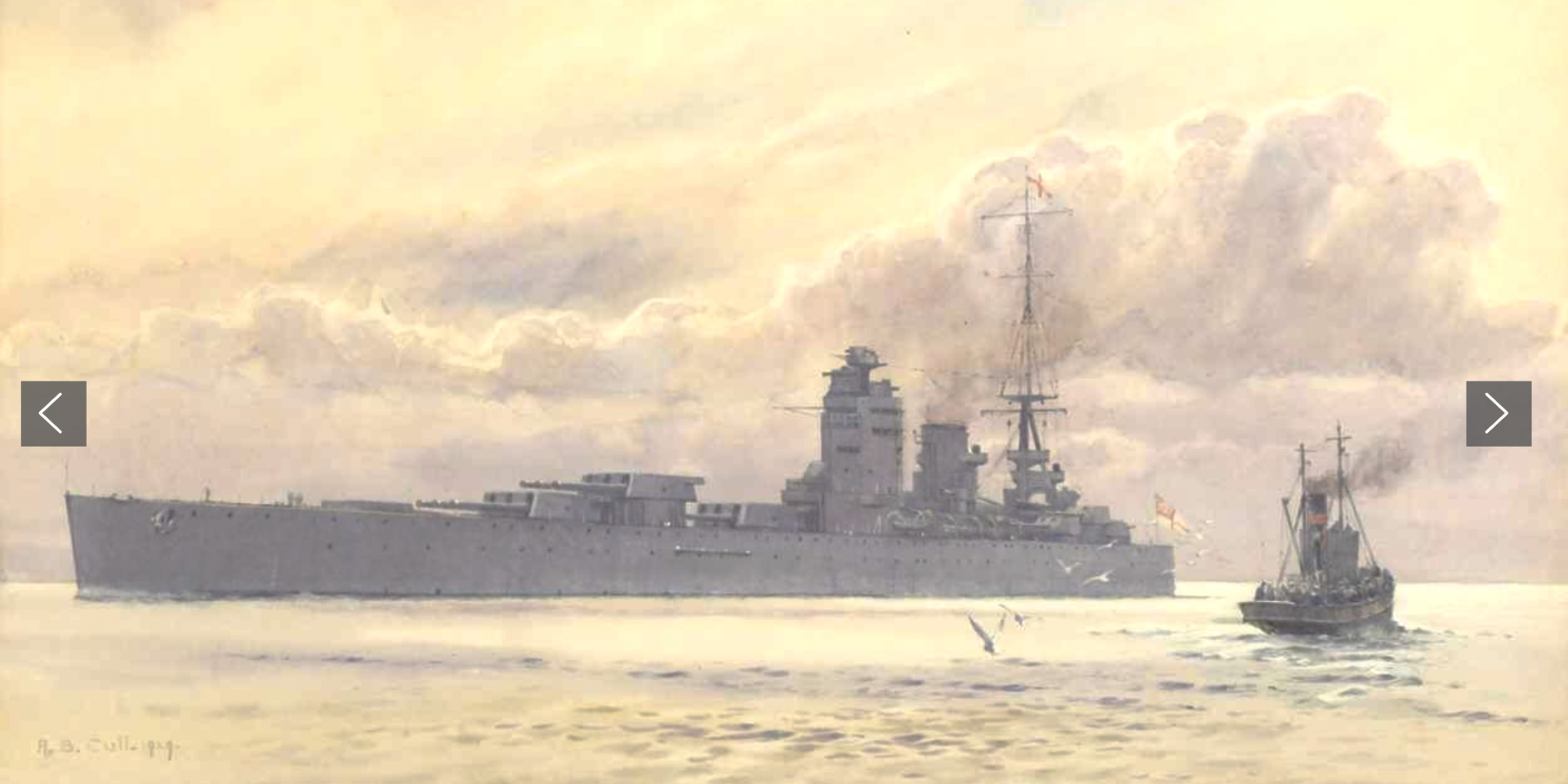HMS NELSON, 1929
. Watercolour signed A B Cull and dated 1929.
18 x 24 ins (25 x 43.3 cms)
SOLD
At the time of the Washington Naval Treaty in 1921 there were four ships of the improved HOOD design under construction each of which was to have been of 48,000 tons. But the Treaty limited the size of capital ships to 35,000 tons so all work on them was stopped. NELSON and RODNEY were accordingly laid down in 1922 to a design which was re-cast to keep them within the limit and resulted in them being the largest battleships in the world. The main armament was an impressive 9 x 16 inch guns grouped in three triple turrets forrard which was intended to save a great deal of armour weight as the main turrets' and magazines' protection could be concentrated in that one forrard area. The bridges, control positions, main directors, sea cabins were all positioned in a huge tower admidships: but the overall result of this, the turrets all together, the control tower, high freeboard and squat stern didn't make for pretty ships and they were the bearers of several unflattering nicknames, Queen Anne's Mansions, referrering to a large red block of flats in London, being one of the best! The long bows and low horsepower with only two shafts for ships of their bulk made them difficult ships to handle when manoeuevring too, so much so that when the ship ran aground off Southsea whilst leaving Portsmouth Naval Base, the Board of Enqiry exonerated Captain Binney. The wardroom mess ashore, however, could not resist the occasion, sending by signal "Please consider yourselves honorary members of our mess during your stay"! But somebody did love them! Their high freeboard made for spacious accommodation and they were, we are told, well regarded ships by their inhabitants. They also did sterling work - which is of course what really mattered - during the war, both surviving and RODNEY being in at the kill of BISMARCK. Both ships were paid off when the war situation allowed in 1945/6 and were scrapped in the late 1940s.
Probably not Cull's first choice of sitter as he was clearly drawn to the good looking capital ships of his day, this was painted perhaps for commission or because Cull felt he had to have one of these two ugly ducklings in his portfolio. At this time Captain Hugh Binney DSO was in command and as Flag Captain to Admiral Sir Ernle Chatfield KCB KCMG CVO, Commander-in-Chief Atlantic Fleet whose cross of St George, the flag of a full admiral, we see here fluttering from the mainmast.
